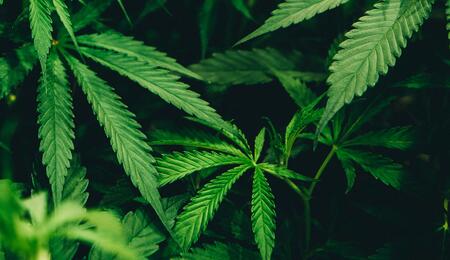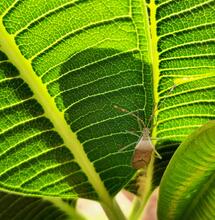The Unique Compounds of Cannabis

Cannabis is a fascinating plant rich in bioactive molecules, many of which are unique to this species. To date, scientists have identified over five hundred different molecules in cannabis, many of which are also found in other plant species. However, there are unique compounds, such as cannabinoids, that are unique to this plant and play a key role in its therapeutic and psychoactive effects.
What Are Terpenes and Cannabinoids?
Terpenes are volatile compounds that give cannabis its characteristic aroma and flavour. These compounds are also found in many other plants, such as citrus fruits, grasses, and pine trees. Terpenes not only contribute to the aromatic profile of cannabis but also have therapeutic properties of their own.
On the other hand, cannabinoids are compounds unique to cannabis. To date, more than seventy cannabinoids have been identified, including THC (tetrahydrocannabinol) and CBD (cannabidiol), which have well-known psychoactive and medicinal properties. Although cannabis is not the only source of cannabinoids, the cannabinoids in this plant have unique effects not found in other species.
Cannabinoids and Their Therapeutic Effects
Cannabinoids are responsible for the therapeutic and psychoactive effects of cannabis. When consumed, they interact with cannabinoid receptors in the human endocannabinoid system, which can influence mood, pain, appetite, and other physiological processes.
Phytocannabinoids: The Impact of Natural Cannabinoids in Cannabis
Phytocannabinoids are the cannabinoids found naturally in the cannabis plant. They are activated by binding to CB1 and CB2 receptors in the human body, triggering a variety of effects. Unlike endocannabinoids (produced internally by the body) and synthetic cannabinoids (made in a laboratory), phytocannabinoids such as THC and CBD have unique properties that contribute to their therapeutic efficacy.
THC (Delta-9-Tetrahydrocannabinol): The Ultimate Psychoactive Compound
THC is the main psychoactive cannabinoid in cannabis. Even though THC does not contain nitrogen, unlike other psychoactive compounds such as alkaloids, it has a potent effect on the central nervous system. It was isolated and synthesized in 1964 by scientist Raphael Mechoulam.
How are Cannabinoids Synthesised in Cannabis?
The biosynthesis of cannabinoids begins with the combination of two basic compounds which produce CBGA (cannabigerolic acid). From CBGA, three different enzymes convert the molecule into various cannabinoids such as THCA (tetrahydrocannabinolic acid), CBDA (cannabidiolic acid) and CBCA (cannabichromenic acid).
Decarboxylation and Activation of Cannabinoids
In the fresh plant, cannabinoids are found in their acidic form (THCA and CBDA). When the plant is dried, these compounds undergo a process called decarboxylation, converting into their active form, such as THC and CBD. This process is essential to maximizing the plant's therapeutic effects.
CBN and Other Lesser-Known Cannabinoids
CBN (cannabinol) is a cannabinoid that is not present in the fresh plant but is formed during ageing or degradation of THC. Although CBN has some psychoactive effects, its main function may be to act as a painkiller.
The Therapeutic Potential of Cannabinoids
Therapeutic cannabinoids have a wide range of applications, both in the treatment of physical and mental illnesses. Below are some of the most important cannabinoids and their potential therapeutic applications:
THC: Anti-inflammatory, anti-epileptic, stimulates appetite and reduces blood pressure.
CBD: Anxiolytic, anticonvulsant, analgesic, sedative and anti-psychotic.
CBN: Analgesic, reduces eye pressure (useful for glaucoma), anti-inflammatory.
CBC: Sedative, analgesic, anti-inflammatory.
CBG: Reduces eye pressure, sedative, anti-inflammatory, helps with sleep.
How to Enhance and Protect Cannabinoids in Cannabis Cultivation
Although cannabis growers cannot alter the plant's genetics to produce more cannabinoids, they can optimize growing conditions to maximize their potential. Factors such as light, temperature, humidity, and nutrition are essential for optimal cannabinoid production.
Protecting Cannabinoids During Flowering and Drying
During flowering, cannabinoids are produced by plants that are not able to produce more cannabinoids.
More From Soft Secrets:



.png)
